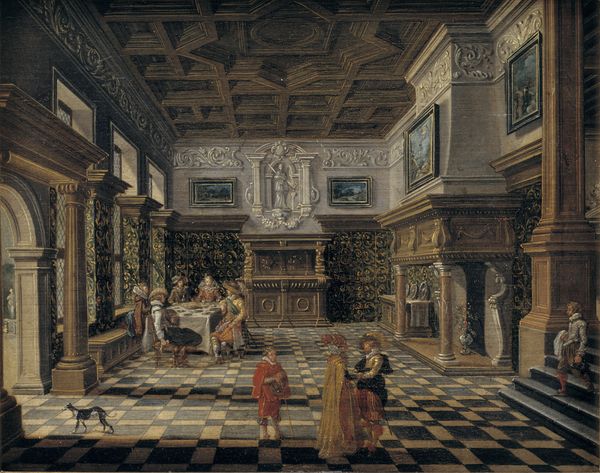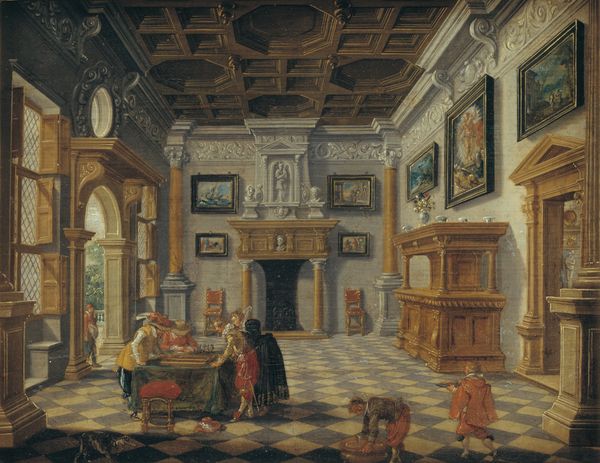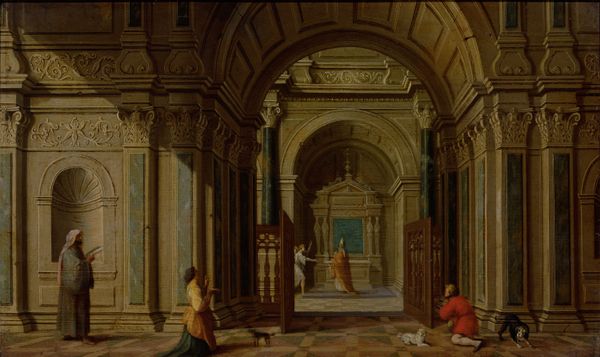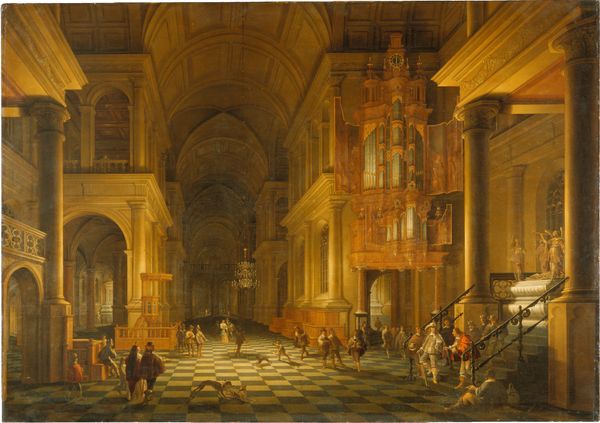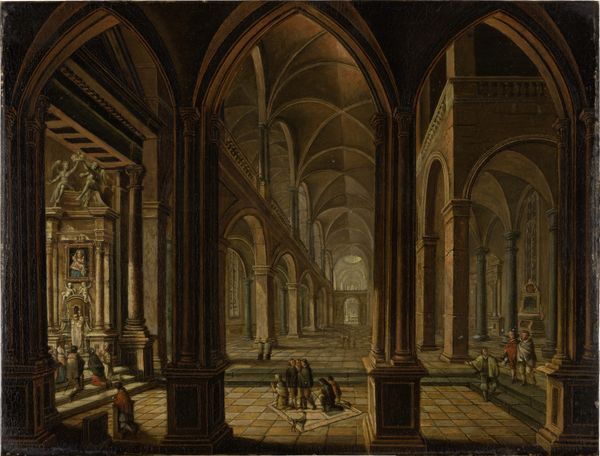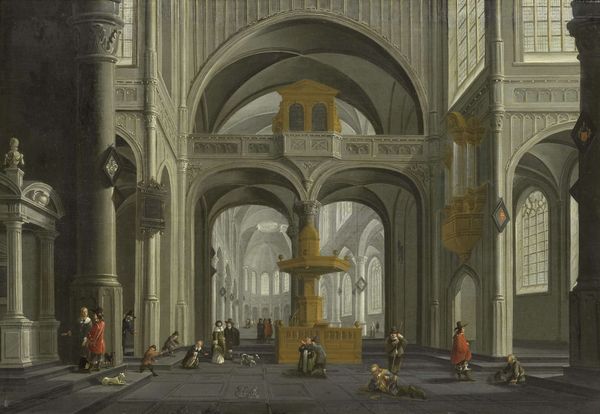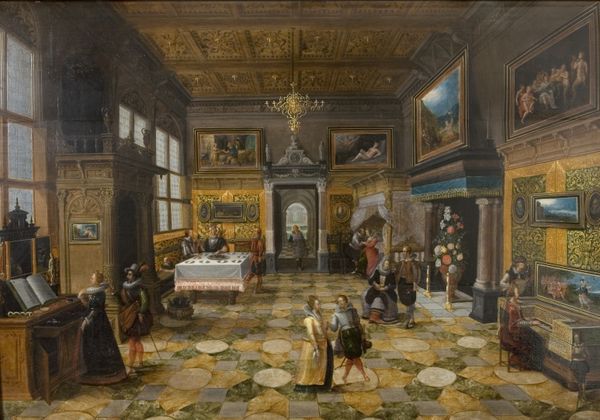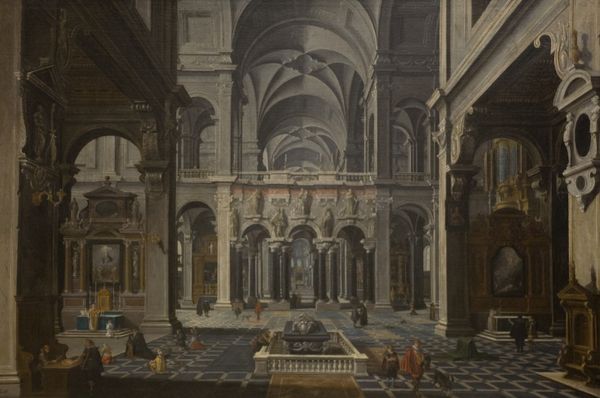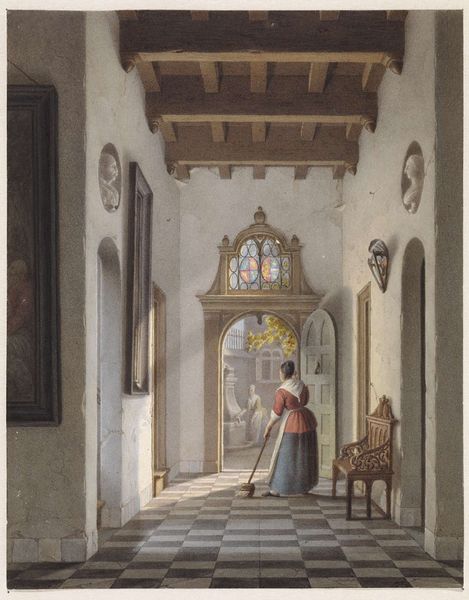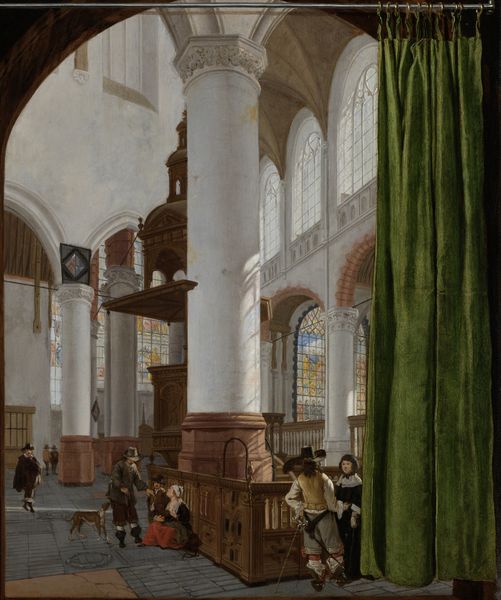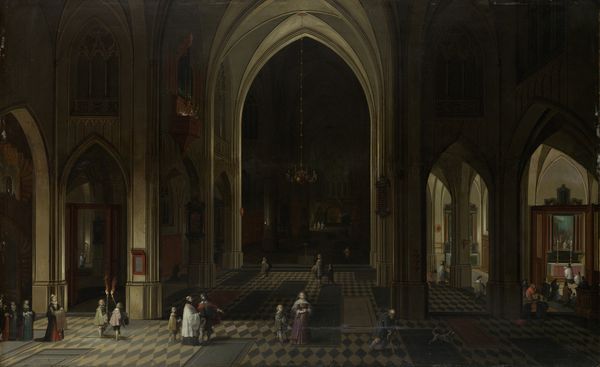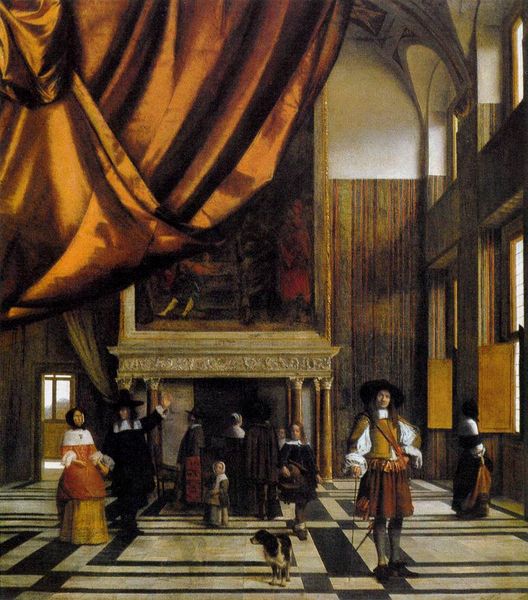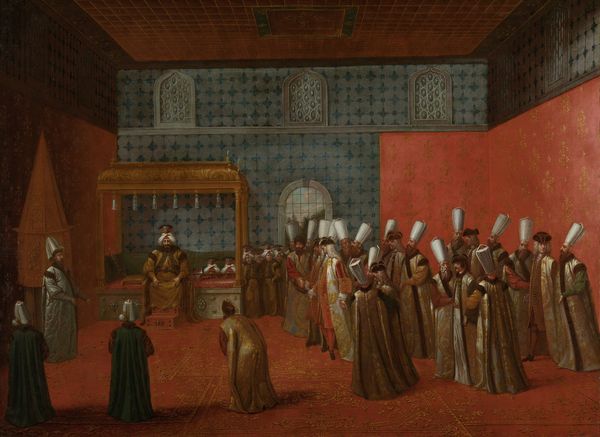
painting, oil-paint
#
baroque
#
painting
#
oil-paint
#
column
#
cityscape
#
genre-painting
#
architectural
Copyright: Public domain
Willem Duyster’s “Figures in a Classical Gallery” was made sometime in the 17th century, most likely using oil paints applied to a wooden panel or canvas. The architecture has a strong presence, made from stone, wood, and glass. The checkered floor is rendered with a precision that is characteristic of his work. But the textiles in the clothing catch the eye – the rich red gown, the gold-threaded vest. Each of these would have been woven by hand or on a loom, the product of skilled labor and global trade, the dyes derived from distant lands. These materials speak to the prosperity of the Dutch Golden Age, where access to luxury goods was an indicator of status. But these surfaces also bear traces of human labor. The weavers who spun the fabric, the tailors who sewed the garments, and the artist who meticulously captured their likenesses on the canvas, all contribute to the work's layered meaning. Looking at the relationship between the artwork and the modes of production allows us to consider how issues like labor and class appear in the work.
Comments
No comments
Be the first to comment and join the conversation on the ultimate creative platform.
